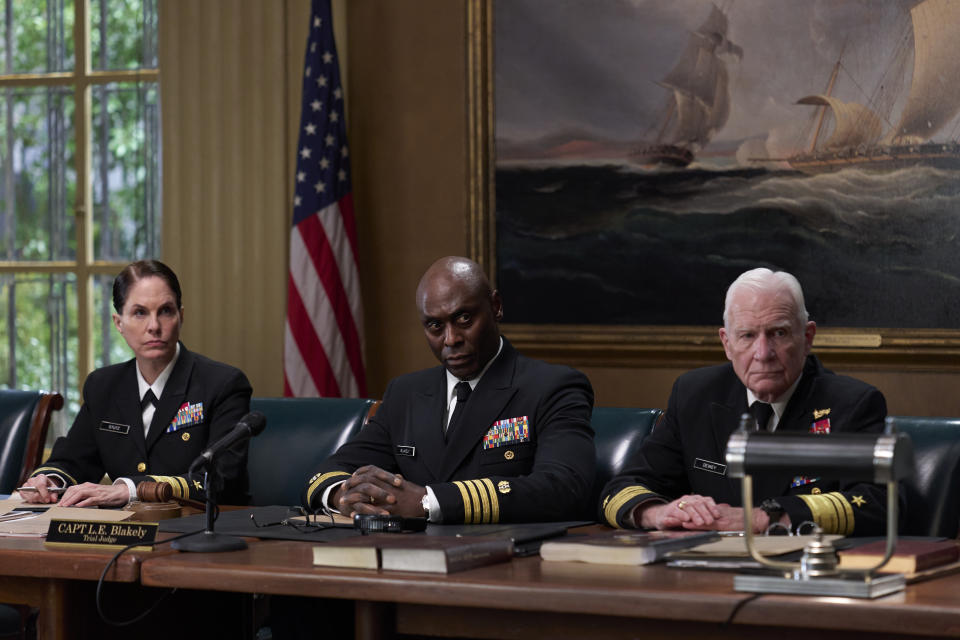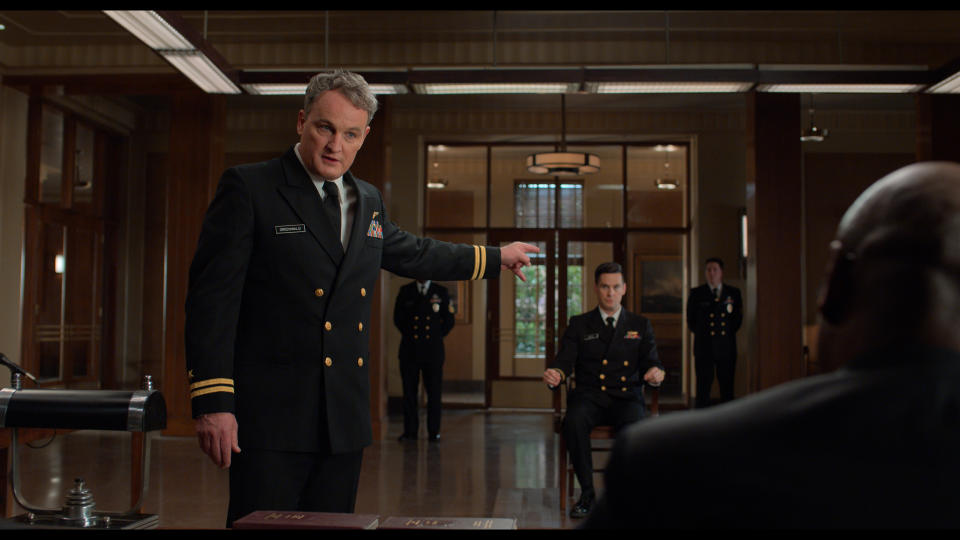What Guillermo del Toro Learned Shadowing William Friedkin on His Final Film

On Friday, October 6, cinephiles were given a precious gift when Showtime dropped one last film by the late, great William Friedkin: an adaptation of Herman Wouk’s play “The Caine Mutiny Court-Martial.” The film is classic Friedkin, a clinic in blocking, editing, and camera movement reminiscent of earlier theatrical adaptations like “The Birthday Party,” “The Boys in the Band,” and “Bug.”
While there are many filmmaking lessons to be learned from studying the piece, one notable Friedkin disciple had the chance to examine the director’s process firsthand: Guillermo del Toro, who shadowed Friedkin throughout production as a backup in case the 87-year-old filmmaker was unable to complete the movie.
More from IndieWire
Long before he ever met Friedkin, del Toro was an admirer of his work. “He is an original,” del Toro told IndieWire. “He blends the lessons of documentary with complex and precise technology and narrative prowess. Every decision he makes is infused with his idiosyncrasies, his personality. Look at the ending of ‘The French Connection’ — that final frame he holds, brutal, mercilessly elliptical — or the final minutes of ‘The Exorcist,’ how he lands the audience softly out of the experience but never loses the mystery. Then try and figure out the mastery in ‘Sorcerer’ or ‘To Live and Die in L.A.'”
Friedkin had been an integral part of del Toro’s self-created film curriculum for years. “I study every day — no exceptions,” del Toro said. “Every day I try to see several films or large portions of them, even when I am shooting. You want to have a dialogue with the material, to try to decipher it logistically or artistically. Crack the codes: where is the master in the cuts? Where is the coverage? What lens? What is the camera mounted on? Why? Billy’s work is endlessly rewarding.”

Del Toro had sporadic contact with Friedkin over the years but finally got to know the director well in 2017. “Kim Morgan, my wife and writing partner on ‘Nightmare Alley,’ had met Billy before and he was a great admirer of her essays and meditations on cinema,” del Toro said. “I had, of course, on occasion interacted with his wife Sherry Lansing while she was the fabulous head of Paramount. I loved to see Billy socially and talk about art and film. We had a passion for certain painters, including Ivan Albright, who, like Billy, was an Illinois son.”
As a friend and a fan del Toro wanted to see Friedkin direct again, and saw a way to help make it happen. “I told him that I would be honored to serve as an ‘insurance director,’ which means you are at hand by the director’s side and ready to step in if any emergency occurs — a policy required for directors over a certain age in order to be bonded and insured,” del Toro said. “I said as much hoping it would be an open invitation for Billy just in case he considered climbing back into the saddle.”
Friedkin trusted del Toro enough to ask him to perform the function on “The Caine Mutiny Court-Martial,” to del Toro’s delight. “I love film and I love many of my colleagues: experienced directors, new directors … I want to see films by them. Sometimes I aid in producing, or in the editing room, just in order to see the films. This was the same impulse.”
Del Toro’s generous offer to his friend yielded enormous rewards for the younger director as he was able to closely observe a master at work; even for an experienced filmmaker like del Toro, the clarity of Friedkin’s approach was illuminating and inspiring. “He said to me, ‘This [is] about the actors and the words — and I have to service that,'” del Toro said. “‘This is a work by a Pulitzer Prize-winner and I am not gonna get in the way.’ He knew he had a very limited budget and time and within that he demanded 100 percent, and he did so 100 percent of the time. He changed the sets down to the last possible minute and pushed his crew but always for a good reason: He would find a painting or a prop distracting and he wanted it out or changed.”
Friedkin’s ability to remove erroneous details from the frame was one of his most impressive skills, according to del Toro. “He ‘tech’ colored every piece of white in the frame to avoid the eye going to it in a distracting manner,” del Toro said, an observation that explains the film’s beautiful golden look, a result of Friedkin’s replacement of all the white with sepia tones.
Given the tight schedule — the movie was shot in just 14 days — Friedkin’s precision is all the more impressive, and the result of a discipline he imposed on both himself and his collaborators. “He told his crew and cast that he would strive for one take and one take only and they better know ‘the book’ backwards and forwards. He was always on and always alert and he had a bullshit meter the size of Nebraska. If an actor was ‘acting’ and not ‘being’ he was instantly able to shake the performance up and he always, always knew when he got it or didn’t.”

Although Friedkin’s reputation is that of a director with a big ego, for del Toro the biggest directing lesson came in the form of his humility. “He was there to serve a piece of dramaturgy and make it live,” del Toro said. “That was the main goal: not a career booster, not a power play, not an ego trip. He was the most collegiate, convivial and crew-loving director but was also willing to push everyone to always being on their toes — this lesson I will carry with me forever.”
Friedkin had a nickname for his crew as well. “He called everyone ‘Moe,’ because in the old carnival days the experienced carnies called each other that to avoid the authorities knowing their names,” said del Toro. “He was brotherly that way: everyone was equal. He finished a day early and demanded the crew be paid for the whole week.”
Friedkin passed away on August 7, and del Toro said he still misses him at least four times a week — sometimes more. “I miss being able to talk to him about projects and ideas, or gifting him books that he enjoyed,” del Toro said. “Or hearing about his days in Chicago and his childhood and formative years. He was tough-as-nails with an ocean of loving, brotherly humanism — a mind and a soul the likes of which we will never see again. He also held his own against the most powerful people in the industry and maintained independence and control until the end. He was never domesticated. He was always feral. Never a house pet.”
Del Toro may have intended his role as “insurance director” to be a gift to Friedkin but found himself the recipient of the process’ greatest rewards. “I went through the experience wanting to serve,” del Toro said. “I sat by his side and gave him great love; I cared for his well-being, watched his needs and was proud to be a glorified gofer and friend. I went to set every day with a zest and a joy I had not felt since my youth. Like all great spiritual rewards, this happens only when you surrender to something greater than yourself. That was Billy.”
“The Caine Mutiny Court-Martial” is currently streaming on Paramount+ with Showtime.
Best of IndieWire
Sign up for Indiewire's Newsletter. For the latest news, follow us on Facebook, Twitter, and Instagram.